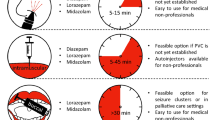Abstract
The effects of CL 218,872, initially classified as a non-sedative anxiolytic, were investigated and compared with those of chlordiazepoxide in the holeboard. The ability of two drugs that antagonise the effects of benzodiazepines, CGS 8216 and Ro 15-1788, to reverse the effects of CL 218,872 and chlordiazepoxide were also investigated, to see whether their effects might be mediated via benzodiazepine receptors. CL 218,872 (10 mg/kg) was found to be significantly sedative in both mice and rats (i.e., both locomotor activity and head-dipping were significantly decreased). In mice, the effects of CL 218,872 and of chlordiazepoxide were very similar over a range of doses, except that the stimulatory effect seen with low doses of chlordiazepoxide on head-dipping just failed to reach significance with CL 218,872. This study is in agreement with recently published results from different tests showing that sedative effects can be obtained with doses of CL 218,872 that are low and not much higher than those leading to anxiolysis. The sedative effects of both CL 218,872 (10 mg/kg) and chlordiazepoxide (20 mg/kg) were significantly reversed by RO 15-1788 (10 and 20 mg/kg) and CGS 8216 (10 mg/kg), suggesting that their effects are mediated via benzodiazepine receptors. The increase in head-dipping seen with chlordiazepoxide (2.5 mg/kg) was also reversed by RO 15-1788 and CGS 8216.
Similar content being viewed by others
References
File SE (1982) Animal anxiety and the effects of benzodiazepines. In: Usdin E, Skolnick P, Tallman JF, Greenblatt D, Paul SM (eds) Pharmacology of benzodiazepines. Macmillan Press, New York
File SE, Pellow S (1984) Behavioural effects of PK 8165 that are not mediated via benzodiazepine receptors. Neurosci Lett 50:197–201
File SE, Wardill A (1975) Validity of head-dipping as a measure of exploration in a modified holeboard. Psychopharmacologia 44:53–57
Hunkeler W, Möhler H, Pieri L, Polc P, Bonetti EP, Cumin R, Schaffner R, Haefely W (1981) Selective antagonists of benzodiazepines. Nature 290:514–516
Klepner CA, Lippa AS, Benson DI, Sano MC, Beer B (1978) Resolution of two biochemically and pharmacologically distinct benzodiazepine receptors. Pharmacol Biochem Behav 11:457–462
LeFur G, Mizoule J, Burgevin MC, Ferris O, Heaulme M, Gauthier A, Gueremy C, Uzan A (1981) Multiple benzodiazepine receptors: evidence of a dissociation between anticonflict and anticonvulsant properties by PK 8165 and PK 9084 (two quinoline derivatives). Life Sci 28:1439–1448
Lippa AS, Coupet J, Greenblatt EN, Klepner CA, Beer B (1979) A synthetic non-benzodiazipine ligand for benzodiazepine receptors: a probe for investigating neuronal substrates of anxiety. Pharmacol Biochem Behav 11:99–106
Lippa AS, Klepner CA, Benson DI, Critchett DJ, Sano MC, Beer B (1980) The role of GABA in mediating the anticonvulsant properties of the benzodiazepines. Brain Res Bull 5 Suppl 2: 861–865
Martin IL, Brown CL, Doble A (1983) Multiple benzodiazepine receptors: structures in the brain or structures in the mind? A critical review. Life Sci 32:1925–1933
Nolan NA, Parkes MLO (1973) The effect of benzodiazepines on the behaviour of mice of mice on the holeboard. Psychopharmacologia 29:277–288
Oakley NR, Jones BJ, Straughan DW (1984) The benzodiazepine receptor ligand CL 218,872 has both anxiolytic and sedative properties in rodents. Neuropharmacology 23:797–802
Sansone M (1979) Effect of repeated administration of chlordiazepoxide on spontaneous locomotor activity in mice. Psychopharmacology 66:109–110
Yokoyama N, Ritter B, Neubert AD (1982) 2-arylpyrazolo [4,3-c] quinolin-3-ones: novel agonist, partial agonist, and antagonist of benzodiazepines. J Med Chem 25:337–339
Author information
Authors and Affiliations
Rights and permissions
About this article
Cite this article
File, S.E., Pellow, S. & Wilks, L. The sedative effects of CL 218,872, like those of chlordiazepoxide, are reversed by benzodiazepine antagonists. Psychopharmacology 85, 295–300 (1985). https://doi.org/10.1007/BF00428190
Received:
Accepted:
Issue Date:
DOI: https://doi.org/10.1007/BF00428190




